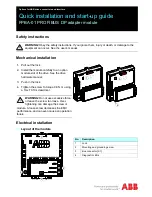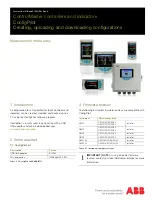
CCEI
Limpido Z2
v1.0
Page 2
FEATURES
General
Model
Limpido Z2
25
Limpido Z2
50
Limpido Z2
75
Sizes
(lxhxp)
300x150x90
Max production
4g/h
8g/h
12g/h
Weight
6kg
Tank volume
10 à 25m
3
20 à 50m
3
30 à 75m
3
Supply
230V/50Hz
Cleaning of cell
Polarity inversion
Consumed Power
100W max
Salt rate
2,5 à 5 g/l
Protection rating
IP-65
Max pressure
3 bars
Insulation
Classe II
Max rate
22 m
3
/h
Delivered
accessories
1
Limpido Z2
®
box
1 Electrolysis cell with Ø50 connections
1 pH7 calibration solution
1 pH9 calibration solution
1 pH probe
2 screw + 2 dowels (wall mounting)
1 cable with connector 2 points for
optional connection "cover contact"
2 Ø50/½’’ clamp saddles
1 probe holder
1 Injector
1 suction strainer
4m of crystal tube for injection
1 technical manual
1 clip for cell connector
1 spare kit ( tube) for pH
pump
PRESENTATION
Limpido Z2
®
is an automatic treatment system for pool water by salt electrolysis.
The electrolysis of salt water separates salt (NaCl) into Sodium (Na) and Chlorine (Cl). The latter immediately
dissolves in the water and produces hypochlorous acid (HClO). This potent disinfectant destroys bacteria and
algae before turning into salt again.
The amount of required chlorine to disinfect a pool increases with the temperature and pH (alkalinity) of the
water.
The production of chlorine must be in keeping with the environment and the characteristics of the water:
♦
water conductivity
♦
water temperature
♦
the volume of the tank to be treated
♦
the pH of the water
For the security of the installation, the electrolyser only produces chlorine when the flow detector signals that
water is circulating in the cell.
In
Shock
or
permanent
mode, the chlorinator therefore produces chlorine so long as the filtration is
operational In
Automatic or thermo regulated
mode, the appliance limits the period of production according
to the water temperature measured in the cell. Using
programmed
mode, the device products according to
the selected numbers of hours.
The production consists of two-period cycles (Normal and Reversal) which alternate the polarity of the
electrodes. This polarity reversal prevents the scaling of the electrodes.
Thus, a production cycle is broken down into 4 phases:
Phase 1, normal production
Phase 2, rest.
Phase 3, reverse production mode.
Phase 4, rest.
The cycle time is adjustable and depends on water hardness to optimize the lifetime of the device.
At the end of a filtration range
Limpido Z2
®
shuts down production and, when the filtration re-starts, it
resumes its cycle exactly at the point where it had been interrupted.
The main advantage of this operating mode is that it guarantees, in all cases (even in the event of a power
failure), completely identical normal or reverse production times and consequently ensures the best possible de-
scaling of the cell (a guarantee of production quality and longevity of the equipment).
































